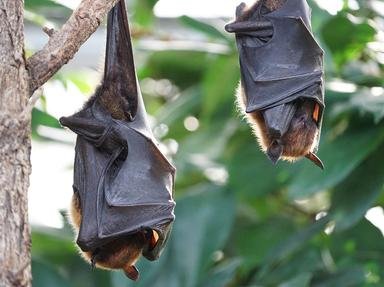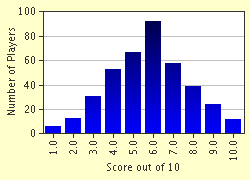Quiz Answer Key and Fun Facts
1. All notoriety aside, blood is actually a reasonably small part of the vampire bat's diet. In captivity, it is not uncommon for these animals to be fed no blood at all.
2. Vampire bats are among the most social of all bat species, and colonies of vampire bats can number in the thousands. What unique behavior is common among vampire bats to help ensure the largest number of surviving colony members?
3. Which of these social activities is also very common in vampire bat colonies?
4. The vampire bat is the only type of bat that is a capable runner as well as a capable flyer.
5. Besides their unique mode of nourishment, what is another way that vampire bats differ from insect-eating bats in their hunting methods?
6. Due to its high metabolism, a vampire bat must consume many times its own weight in blood per night. It is not uncommon for a vampire bat to drink a pint of blood per week.
7. Because vampire bats do not chew their food, their molars are less developed than those of other flying mammals.
8. In 2003, a scientific paper was published regarding the clinical use of desmoteplase, a substance that occurs naturally in the saliva of vampire bats. For what use is this drug being tested?
9. Though it is common for non-scientists to speak of vampire bats collectively, there are actually several species of flying mammal that carry the name.
10. In which of these countries or regions would you be least likely to find a vampire bat?
Source: Author
stuthehistoryguy
This quiz was reviewed by FunTrivia editor
crisw before going online.
Any errors found in FunTrivia content are routinely corrected through our feedback system.


